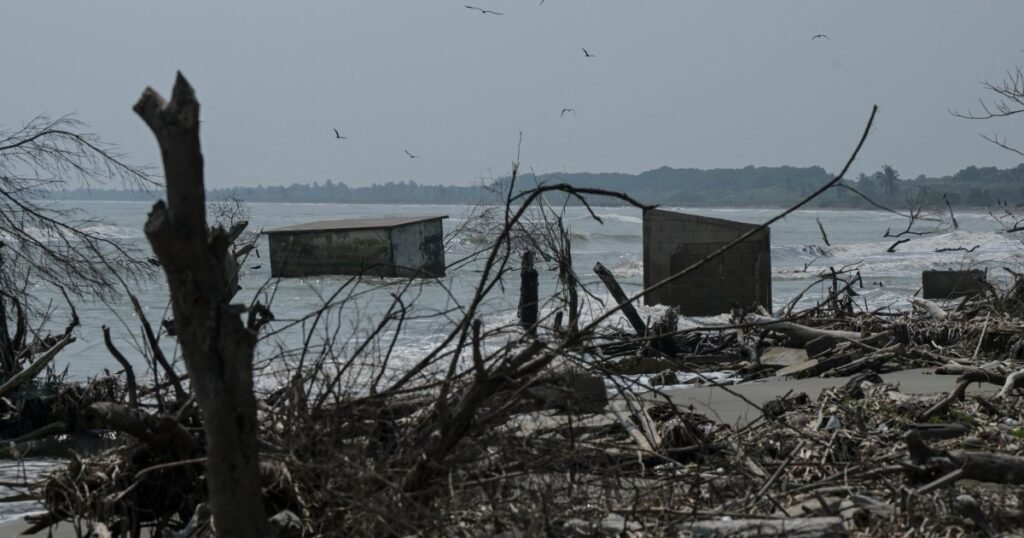Surging sea levels are creating a rising tide of misery that threatens the future of nearly a billion people living in low-lying coastal areas, as they become increasingly vulnerable to storm surges, coastal erosion, and flooding. Since the beginning of the 20th century, the global mean sea level has risen faster than in any prior century over at least the past 3,000 years. NASA reports that global temperatures have risen about one degree Celsius, leading to sea level increases of 160 to 210 millimeters, with about half of that amount occurring since 1993. Antonio Guterres, the UN chief, warns of communities being overwhelmed, freshwater contamination, ruined crops, damaged infrastructure, destroyed biodiversity, and devastated economies due to sectors such as fisheries, agriculture, and tourism being affected.
The World Meteorological Organization reported that the average global sea level reached a record high last year. The UN stated that the rate of sea level rise over the past decade is more than double the rate from 1993 to 2002, driven primarily by human-induced climate change. Melting land ice and the expansion of seawater due to warming are the main factors behind rising waters globally. The UN Foundation’s Ryan Hobert emphasizes the ocean’s role in absorbing excess heat released into the atmosphere but warns that as water heats up, it expands, accounting for nearly half of the observed sea level rise. In his speech, Guterres described the ocean as overflowing and placed the blame for the crisis entirely on humanity.
Pacific islands are facing growing threats to their economic viability and existence due to sea-level rise and other climate effects. Small islands with low-lying land areas, such as Fiji, Vanuatu, and the Solomon Islands, are particularly vulnerable. Climate change-induced events are already forcing people in these nations to relocate. The Maldives, Tuvalu, the Marshall Islands, Nauru, and Kiribati may become uninhabitable by 2100, leading to the creation of 600,000 stateless climate refugees. Hobert emphasizes the importance of curbing global greenhouse gas emissions as the primary way to stop rising sea levels, especially for Small Island Developing states like the Marshall Islands and Tuvalu, whose very existence is threatened by sea-level rise.
The UN has warned that flooding caused by rising sea levels can have a range of detrimental effects, including increased soil salinity, reduced crop yields, weakened trees, and infrastructure damage. Saltwater flooding can damage coastal habitats, fish stocks, agricultural lands, and infrastructure, affecting the ability of coastal communities to sustain their livelihoods. Freshwater supplies can become contaminated, leading to waterborne diseases and mental health problems. Countries whose main source of income is tourism can also suffer from damage to beaches, resorts, and coral reefs. Investment in climate adaptation and resilience is crucial to mitigate the impacts of rising sea levels on these communities.
Guterres highlighted the urgent need to address the rising sea levels that threaten the livelihoods, cultures, and existence of coastal communities worldwide. Cities like Bangkok, Buenos Aires, Lagos, London, Mumbai, New York, and Shanghai are also at risk of catastrophic flooding. The international community must prioritize measures to mitigate the impacts of sea-level rise, including reducing greenhouse gas emissions, investing in adaptation and resilience strategies, and supporting vulnerable communities. Failure to act decisively could lead to irreversible damage to ecosystems, infrastructure, economies, and livelihoods of coastal populations around the world.












